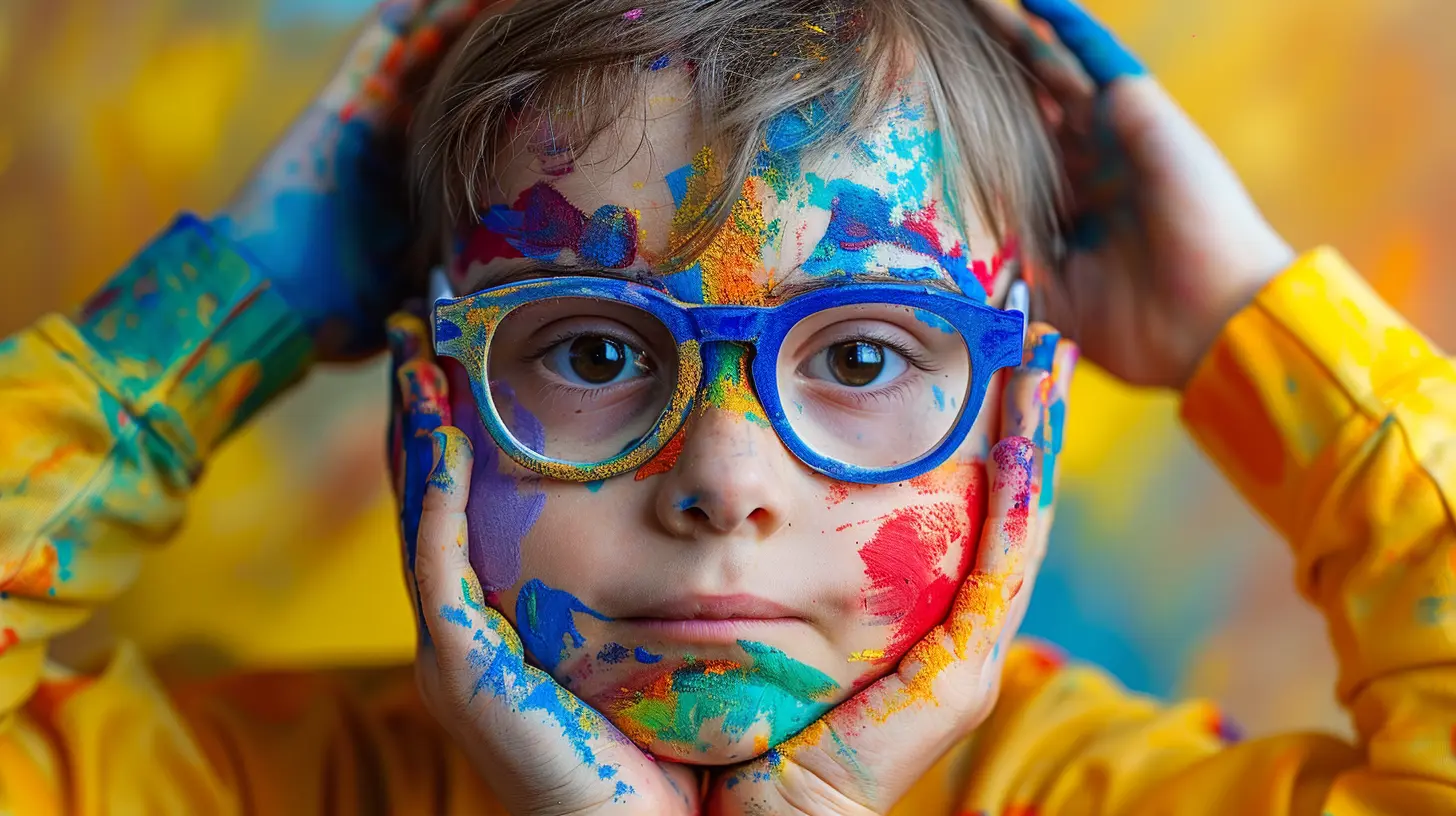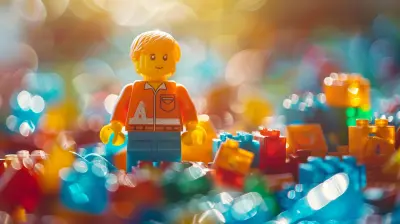Managing Anxiety in Kids with Special Needs: Parent Strategies
8 August 2025
Let’s be real here—raising kids is a workout for the soul. Now toss in a heap of extra needs, a sprinkle of anxiety, and a never-ending pile of laundry, and you've got yourself a parenting marathon. Managing anxiety in kids with special needs doesn’t come with a user manual (wouldn’t that be great though?), but it does come with some battle-tested tips, a lot of love, and the occasional ugly cry in the pantry.
So buckle up, fellow warrior parent—we’re diving into the wild and wobbly world of childhood anxiety, and how we, as the daily heroes, can help our beautiful neurodivergent kiddos weather the storm.
What Exactly Is Anxiety, And Why Does It Love Our Kids So Much?
Anxiety, my friend, is that uninvited guest who shows up to the party and refuses to leave. It's not just feeling nervous. It's a full-body, mind-warping experience that can feel overwhelming—especially for kids who already process the world differently.Children with special needs—be it autism, ADHD, sensory processing disorder, or other neurological differences—are already juggling more emotional and sensory input than most adults handle with two cups of coffee and a stress ball.
Now throw anxiety into the mix?
It’s like asking them to juggle flaming swords… on a unicycle… during a thunderstorm.
Spotting The Sneaky Signs of Anxiety (Spoiler: It’s Not Always Obvious)
Anxiety doesn’t always look like nail-biting and pacing. Especially in neurodivergent kids, it can wear some pretty wacky disguises. Let’s decode some of them:🚩 The Classic Meltdown
You’re in Target. Everything's fine. Then SUDDENLY—your child is throwing themselves on the floor like a soap opera star. Dramatic? Maybe. Anxiety-induced? Probably. Transitions and sensory overload often trigger fight-or-flight responses.😶 The Silent Shutdown
Some kids go full statue. No eye contact. No speech. Just... frozen. It's like they've been hit with the “blue screen of death.” That's their brain trying to buffer through the anxiety.🧷 Over-Attachment Velcro Mode
Ever find your child glued to your leg like a very loud fashion accessory? Yup. That’s anxiety talking. Clinginess is their way of ensuring safety and predictability.💥 Rage Monster Mode Activated
Aggression, hitting, or screaming doesn’t always mean your child is angry—it might mean they’re scared out of their little minds and don’t know how to say it. Anxiety speaks in roars sometimes.
So, What’s A Tired, Coffee-Dependent Parent To Do?
Here’s where we roll up our sleeves and dive into our toolkit. Managing anxiety isn’t about “fixing” your child. It’s about equipping them—and yourself—with strategies that truly work.🛠️ 1. Create a Calm-Down Toolbox (Literal and Figurative)
You know how grown-ups have wine, yoga, or rage-cleaning? Kids need their own healthy outlets. For a child with special needs, having a “calm-down kit” can be game-changing.What goes in the anxiety-busting toolbox?
- Fidget toys or sensory items (squishies, putty, chewies)
- Noise-canceling headphones (to block out society's chaos)
- Weighted blankets or lap pads
- Visual timers or calming visuals
- Their comfort object (a crusty love-worn teddy counts)
Keep it within reach. Trust me, it’s more effective than hiding in the bathroom with your phone (although, been there).
⏰ 2. Keep A Routine (And Stick To It Like Glitter After Craft Time)
If autism or other developmental differences are part of your child’s world, you already know how sacred routine is. Anxiety thrives on unpredictability. Your best defense? Predictability.Consistency turns chaos into “I’ve got this.”
Even a visual schedule using picture cards can help your child feel more in control. And we all know, control is anxiety’s kryptonite.
🧠 3. Name That Feeling (Because “AHHH!” Isn’t Super Helpful)
Teaching emotional vocabulary might sound like one of those Pinteresty things reserved for type-A parents... but it’s actually super powerful.When your child can say “I feel scared” instead of throwing a chair, that’s a MASSIVE win.
Try this:
- Use feeling charts or books about emotions.
- Label their feelings out loud: “It looks like you're feeling worried. Is that right?”
- Relate it to characters in shows (like Daniel Tiger’s whole vibe).
This helps them identify and manage the anxiety instead of getting steamrolled by it.
😌 4. Practice Breathing—The Non-Zen Version for Wiggly Kids
Telling an anxious five-year-old to “take a deep breath” is like asking a hurricane to calm down. So let’s make it fun.Try these breathing tricks:
- Bubble breathing – pretend to blow a bubble slowly, don’t “pop it.”
- Snake hissing – breathe in, then hiss out like a snake.
- Smell the flower, blow out the candle – dramatic sniff, then blow. Ta-dah!
Make it visual. Make it silly. Make it something your kid will actually want to do.
🎭 5. Roleplay Scary Situations (AKA, Drama With A Purpose)
If your child freaks out before dentist visits or birthday parties, roleplay it at home. Use toys, act it out, make it funny. (Yes, be the nervous dentist who drops his tools. Go wild.)This sneakily preloads their brain so that when the real-day event happens, it’s not completely foreign and terrifying. It’s like rehearsing your lines before opening night.
❤️ 6. Praise The Calm Like They Just Won an Oscar
Everyone loves a high-five. When your child makes it through an anxiety-filled moment—whether they used their coping skills or just didn’t Hulk-smash the furniture—celebrate it.- “I saw you took deep breaths when you were upset. That was awesome!”
- “You told me you were scared instead of yelling. That’s a really big deal!”
Positive reinforcement rewires the brain like magic fairy dust. Anxious kids often feel out of control and defeated. Help them feel like champions.
📞 7. Call In The Pros (And Don’t Feel Weird About It)
Therapists. Occupational therapists. Behavioral specialists. Support groups. Say it with me: You are not failing if you need help.Sometimes anxiety needs more than at-home tools. Sometimes it needs science, experience, and a professional who knows their stuff. And that’s okay.
Also? You deserve support too. Therapy isn’t just for your kiddo. It’s for you, your marriage, your dog—whoever’s been stuck in the crossfire of anxiety meltdowns.
Real Talk: Your Kid Is Not Broken. And Neither Are You.
It’s easy to feel like you’re doing something wrong when your kid has anxiety—especially when the other moms at the playground are out here with their organic snacks and their kids who sit quietly on swings. But comparison is a thief, and parenting is not a Pinterest board.Your child’s anxiety is not a result of your failure.
It’s a result of them being wired differently in a world that doesn’t always make sense.
And you know what? You are exactly the warrior they need. Even if your battlefield armor is pajamas and unbrushed hair.
So let’s recap, shall we?
The Parent Survival Strategy Recap
- Recognize the signs of anxiety in kids with special needs (even when they come in weird costumes).- Build a calm-down kit that rivals Batman's utility belt.
- Hold that routine tighter than your last nerve.
- Teach emotional vocabulary like you're raising a tiny therapist.
- Make breathing exercises goofy, not guru.
- Practice situations like a community theater star.
- Celebrate small wins like they’re Nobel Prizes.
- Get professional help when needed—no shame, no guilt, no cape required.
Managing anxiety in kids with special needs isn't a one-size-fits-all journey. But with the right tools, a load of compassion, and the occasional emergency chocolate stash, you’re absolutely equipped to guide your child through it.
Breathe in. Breathe out. You’ve got this. And hey—if nobody's told you today? You're doing a dang fine job.
all images in this post were generated using AI tools
Category:
Special NeedsAuthor:

Noah Sawyer
Discussion
rate this article
1 comments
Hattie McKinstry
Thank you for sharing these valuable strategies! It’s so comforting to know we’re not alone in navigating our kids’ anxieties together.
August 21, 2025 at 4:45 PM

Noah Sawyer
Thank you for your kind words! I'm glad you found the strategies helpful. We're all in this together!


